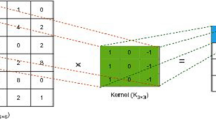Abstract
Moving object detection is a basic and important work in intelligent video analysis. Recently, a lot of methods have sprung up. Among them, the methods based on deep learning have achieved very amazing results. However, the methods based on deep learning rely on special annotated data to train the model. Thus they have weak generalization ability and can only deal with the data related to the training data. In order to handle this issue, this paper proposes a method based on Truncated Weighted Robust Principal Component Analysis and Salience Convolution Neural Network. Unlike other deep learning methods, the input of the proposed method does not contain the scene information. The proposed method uses the salient information obtained by the proposed Truncated Weighted Robust Principal Component Analysis as input. This improves the generalization ability of the proposed method. The experimental results show the superior performance of the proposed method for unseen videos on CDNET 2014 database.






Similar content being viewed by others
References
Barnich O, Van Droogenbroeck M (2009) Vibe: a powerful random technique to estimate the background in video sequences. In: 2009 IEEE international conference on acoustics, speech and signal processing. IEEE, pp 945–948
Bouwmans T, Javed S, Sultana M, Jung S K (2019) Deep neural network concepts for background subtraction: A systematic review and comparative evaluation. Neural Netw 117:8–66
Braham M, Van Droogenbroeck M (2016) Deep background subtraction with scene-specific convolutional neural networks. In: 2016 international conference on systems, signals and image processing (IWSSIP). IEEE, pp 1–4
Cao X, Yang L, Guo X (2016) Total variation regularized rpca for irregularly moving object detection under dynamic background. IEEE Trans Cybern 46(4):1014–1027. https://doi.org/10.1109/TCYB.2015.2419737
Ebadi S E, Izquierdo E (2018) Foreground segmentation with tree-structured sparse rpca. IEEE Trans Pattern Anal Mach Intell 40(9):2273–2280. https://doi.org/10.1109/TPAMI.2017.2745573
Elgammal A, Harwood D, Davis L (2000) Non-parametric model for background subtraction. In: European conference on computer vision. Springer, pp 751–767
Evangelio R H, Pätzold M, Sikora T (2012) Splitting gaussians in mixture models. In: 2012 IEEE Ninth international conference on advanced video and signal-based surveillance. IEEE, pp 300–305
Hofmann M, Tiefenbacher P, Rigoll G (2012) Background segmentation with feedback: The pixel-based adaptive segmenter. In: 2012 IEEE computer society conference on computer vision and pattern recognition workshops. IEEE, pp 38–43
Isik S, Özkan K, Günal S, Gerek O N (2018) Swcd: a sliding window and self-regulated learning-based background updating method for change detection in videos. J Electron Imaging 27(2):023002
Li Y, Liu G, Liu Q, Sun Y, Chen S (2019) Moving object detection via segmentation and saliency constrained rpca. Neurocomputing 323 (5):352–362
Liao J, Guo G, Yan Y, Wang H (2018) Multiscale cascaded scene-specific convolutional neural networks for background subtraction. In: Pacific Rim Conference on Multimedia. Springer, pp 524–533
Lim L A, K H Y (2018) Learning multi-scale features for foreground segmentation. Pattern Anal Applic 23:256–262
Lim L A, Keles H Y (2018) Foreground segmentation using convolutional neural networks for multiscale feature encoding. Pattern Recogn Lett 112:256–262
Rahmani M, Atia G K (2017) High dimensional low rank plus sparse matrix decomposition. IEEE Trans Signal Process 65(8):2004–2019
Sakkos D, Liu H, Han J, Shao L (2018) End-to-end video background subtraction with 3d convolutional neural networks. Multimed Tools Appl 77(17):23023–23041
Stauffer C, Grimson W E L (1999) Adaptive background mixture models for real-time tracking. In: Proceedings. 1999 IEEE Computer Society Conference on Computer Vision and Pattern Recognition (Cat. No PR00149), vol 2. IEEE, pp 246–252
Sultana M, Mahmood A, Javed S, Jung S K (2019) Unsupervised deep context prediction for background estimation and foreground segmentation. Mach Vis Appl 30(3):375–395
Tezcan O, Ishwar P, Konrad J (2020) Bsuv-net: a fully-convolutional neural network for background subtraction of unseen videos. In: The IEEE Winter Conference on Applications of Computer Vision, pp 2774–2783
Wang Y, Luo Z, Jodoin P-M (2017) Interactive deep learning method for segmenting moving objects. Pattern Recogn Lett 96:66–75
Xiao X, Lian S, Luo Z, Li S (2018) Weighted res-unet for high-quality retina vessel segmentation. In: 2018 9th International Conference on Information Technology in Medicine and Education (ITME), pp 327–331
Zeng D, Zhu M (2018) Background subtraction using multiscale fully convolutional network. IEEE Access 6:16010–16021
Acknowledgements
This work was supported in part by the Jiangsu Provincial Colleges of Natural Science General Program under Grant 21KJB520006, in part by Research Project of Jiangsu Vocational College of Information Technology under Grant 10072020028(001), in part by Higher Vocational Education Teaching Fusion Production Integration Platform Construction Projects of Jiangsu Province under Grant No.2019(26), in part by “Qing Lan Project” Teaching Team in Colleges and Universities of Jiangsu Province under Grant No.2017(15), in part by High Level of Jiangsu Province Key Construction Project Fund under Grant No.2017(17), in part by Jiangsu Province Higher Vocational Education High Level Professional Group Construction Project Funding (SuJiaoZhiHan[2021] No.1), in part by The General Project fund of Natural Science Research in Universities of Jiangsu Province (18KJD510011), in part by Excellent Teaching Teams of “Qinglan Project” in Universities of Jiangsu Province (SuJiaoShi[2020] *).
Author information
Authors and Affiliations
Corresponding author
Ethics declarations
Conflict of Interests
The authors declare that they have no conflict of interest.
Additional information
Publisher’s note
Springer Nature remains neutral with regard to jurisdictional claims in published maps and institutional affiliations.
Rights and permissions
About this article
Cite this article
Li, Y. Moving object detection for unseen videos via truncated weighted robust principal component analysis and salience convolution neural network. Multimed Tools Appl 81, 32779–32790 (2022). https://doi.org/10.1007/s11042-022-12832-0
Received:
Revised:
Accepted:
Published:
Issue Date:
DOI: https://doi.org/10.1007/s11042-022-12832-0




